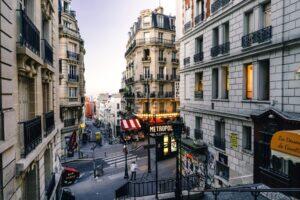Fodor's Expert Review Musée Carnavalet

If it has to do with Parisian history, it's here. Spruced up after a four-year renovation, this fascinating hodgepodge of artifacts and art ranges from prehistoric canoes used by the Parisii tribes to the cork-lined bedroom where Marcel Proust labored over his evocative novels. Thanks to scores of paintings, drawings, photographs, furniture, and scale models, nowhere else in Paris can you get such a precise picture of the city's evolution through the ages. The museum fills more than 100 rooms in two adjacent mansions, the Hôtel Le Peletier de St-Fargeau and the Hôtel Carnavalet. The latter is a Renaissance jewel that was the home of writer Madame de Sévigné from 1677 to 1696. Throughout her long life, she wrote hundreds of frank and funny letters to her daughter in Provence, giving an incomparable view of both public and private life during the time of Louis XIV. The museum offers a glimpse into her world, but its collection covers far more than just the 17th century. The exhibits... READ MORE
If it has to do with Parisian history, it's here. Spruced up after a four-year renovation, this fascinating hodgepodge of artifacts and art ranges from prehistoric canoes used by the Parisii tribes to the cork-lined bedroom where Marcel Proust labored over his evocative novels. Thanks to scores of paintings, drawings, photographs, furniture, and scale models, nowhere else in Paris can you get such a precise picture of the city's evolution through the ages. The museum fills more than 100 rooms in two adjacent mansions, the Hôtel Le Peletier de St-Fargeau and the Hôtel Carnavalet. The latter is a Renaissance jewel that was the home of writer Madame de Sévigné from 1677 to 1696. Throughout her long life, she wrote hundreds of frank and funny letters to her daughter in Provence, giving an incomparable view of both public and private life during the time of Louis XIV. The museum offers a glimpse into her world, but its collection covers far more than just the 17th century. The exhibits on the Revolution are especially interesting, with scale models of guillotines and a replica of the Bastille prison carved from one of its stones. Louis XVI's prison cell is reconstructed along with mementos of his life, even medallions containing locks of his family's hair. Other impressive interiors are reconstructed from the Middle Ages through the rococo period and into Art Nouveau—showstoppers include the Fouquet jewelry shop and the Café de Paris's original furnishings. The sculpted garden at 16 rue des Francs-Bourgeois is open from April to the end of October.
READ LESS








